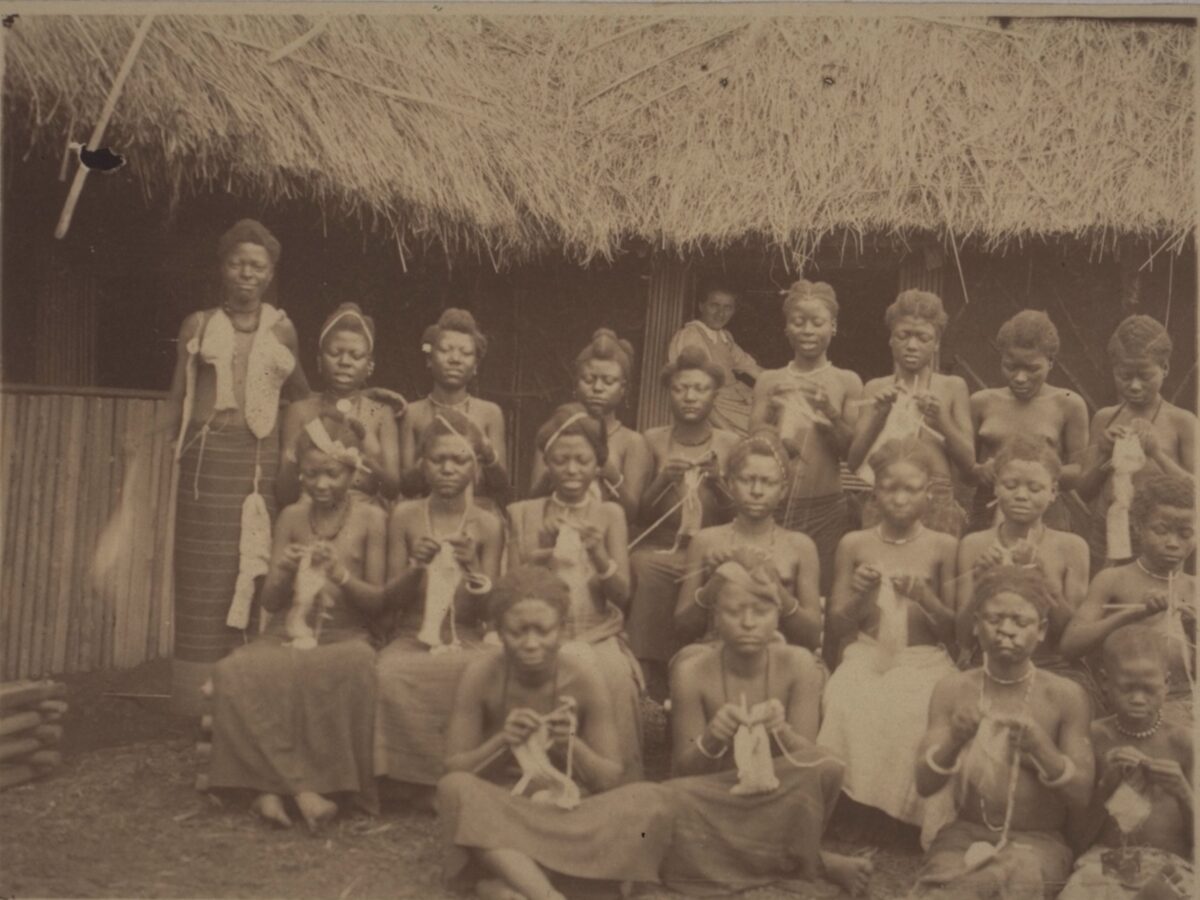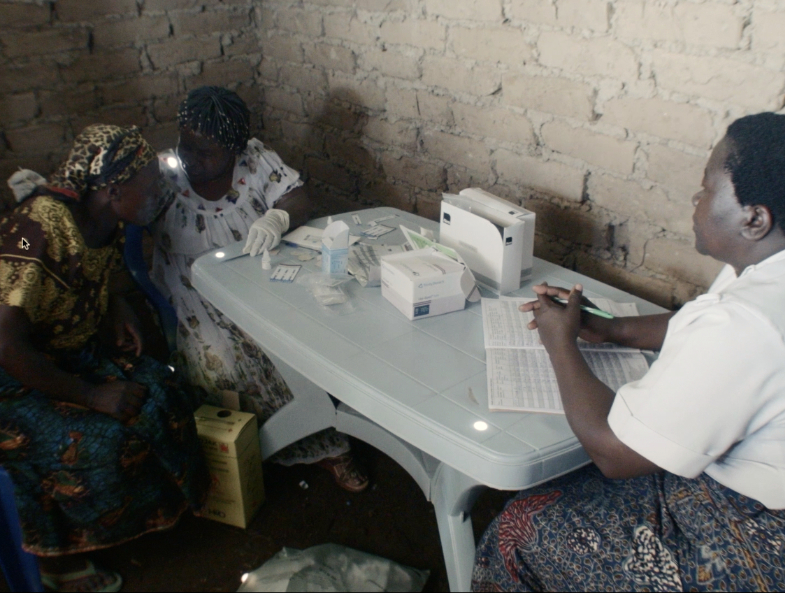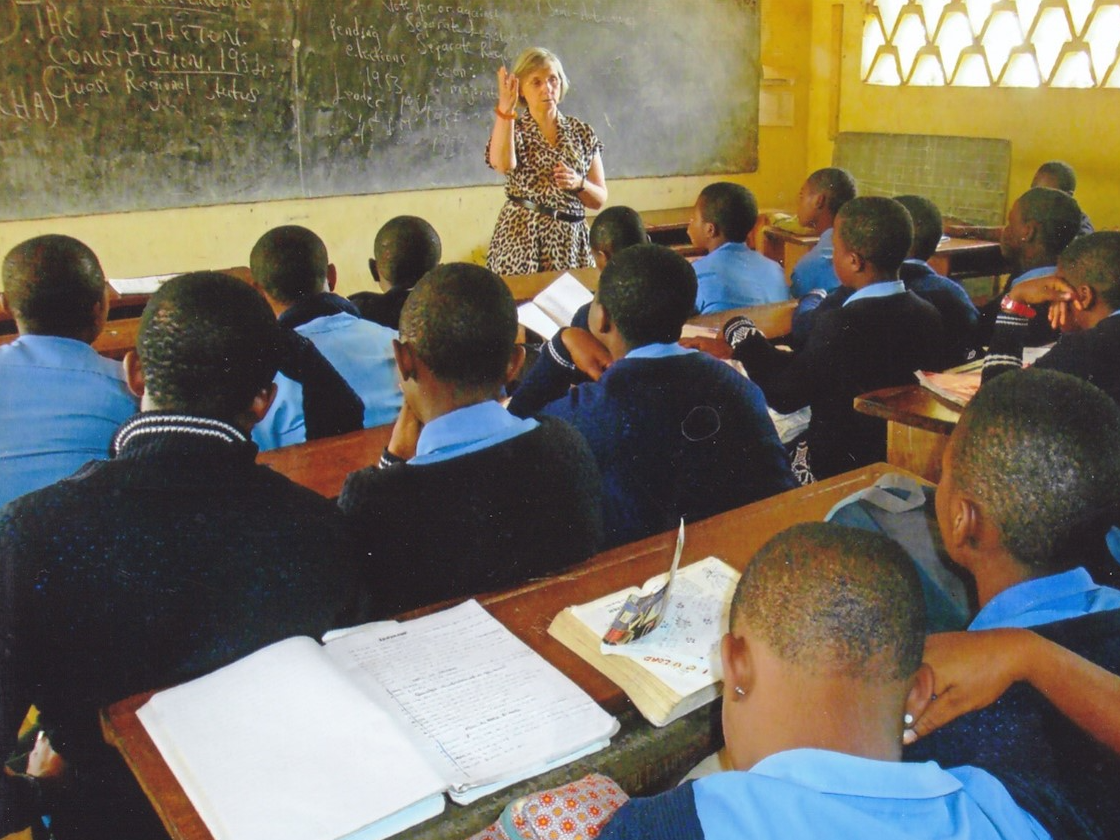Why are the young women knitting in this picture? And who placed them in front of the camera? To "read" historical images, we often need additional information beyond what we see.
This year we present some photographs from the historical research archive of Mission 21 that raise awareness of the fact that an image without additional information can trigger false associations. This is also the case with the picture shown here, titled "Knitting schoolgirls".
We became aware of this picture through an article by Paul Jenkins, the former archivist of the Basel Mission, who analyzed the picture in the book "Getting Pictures Right "*. It shows a group of young women in Fumban, the capital of the Kingdom of Bamum, in the highlands of Cameroon. Visible in the background is Anna Wuhrmann, a teacher at the girls' school. Part of the group is cut off at the edge of the picture.
Through-composed recording
Perhaps Anna Wuhrmann, who took the photographs herself, took the picture with a self-timer. It was certainly composed in advance, for example by covering the women's naked upper bodies with the knitting. The standing woman on the far left seems to be well aware of this with her socks hung around her chest and her mischievous grin.
At first glance, the picture seems to cement the typical idea of mission. Young women in Cameroon have to learn needlework, in this case knitting, in order to conform to the Western ideal of a Christian housewife. This in no way addresses customs or climate in the mission area. This focus changes with a document in which Anna Wuhrmann described some of her paintings, including this one.
125 pairs of socks in ten weeks
Cameroon had been a German colony since 1884. After the outbreak of World War I in 1914, the French and English occupied the coasts first, so that the interior of the country was cut off from supplies. The soldiers' clothes suffered greatly, but could not be replaced. Anna Wuhrmann writes: "In June 1915, the German governor sent a request to all German women still in the colony to knit socks for the soldiers on duty, 800 pairs."
The King of Fumban considered himself an ally of the German Emperor at that time. In ten weeks, the schoolgirls knitted 125 pairs of cotton socks for the soldiers and thus followed their king, who supported Germany until the end of the war. The painting is thus an exciting example of the colonial intertwining of the mission, but it can only be properly interpreted with additional information.
Text: Andrea Rhyn, Mission 21
*Paul Jenkins "Camera evangelista - camera lucida? Trans-border experiences with historical photographs from a mission archive", in: "Getting Pictures Right", 2004, ed. by M. Albrecht, V. Arlt, B. Müller & J. Schneider.






